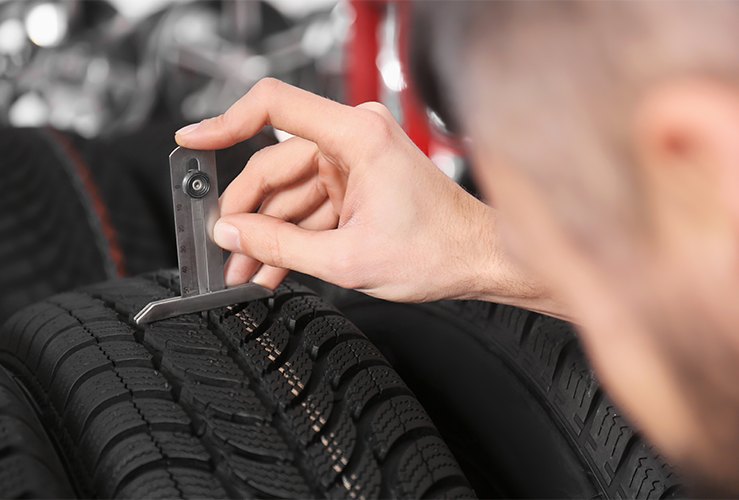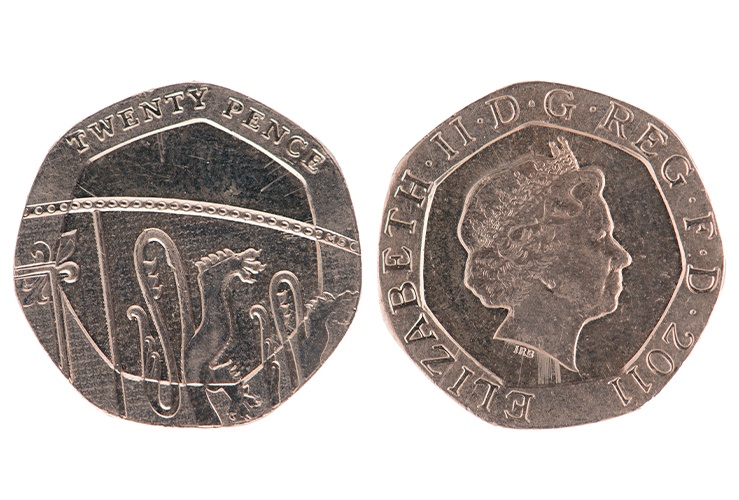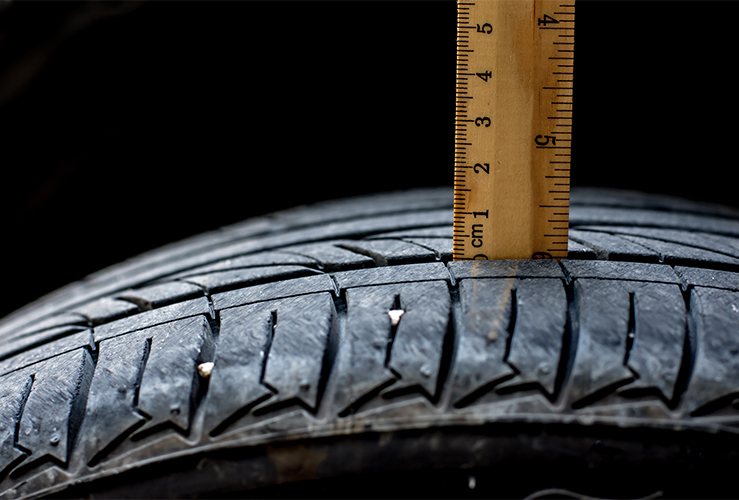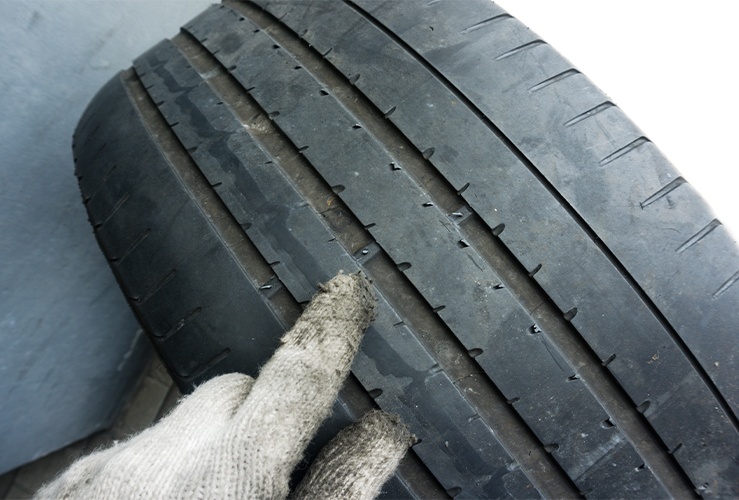Sub-standard tread depth increases the risk of having an accident and could result in a £2,500 fine for each tyre that does not meet legal minimum.

Your tyres connect your vehicle to the road and need to be kept in good condition to maximise grip and minimise stopping distances.
The condition of your tyres could be the difference between having an accident - and not.
And if you're fined for having a set of four worn tyres, you could be £10,000 out of pocket.
What’s the legal minimum depth of tread for car tyres?
Across the UK and the EU, the minimum legal tread depth is 1.6mm across the central three-quarters of the tyre.
This minimum applies to the entire circumference.
But aim for 3mm+ tread depth
However, experts have warned that 1.6mm is not sufficient to ensure road safety.
Tyre tread below 3mm increases the risk of a collision
According to a report by the Road Safety Observatory, conducted by engineering firm MIRA, "The risk of being involved in a collision remained constant until vehicle tread depths dropped below 3mm".
When a tyre tread gets worn below 3mm, stopping distances increase, making it harder to avoid collisions.
Worn tyres increase the chance of being in an accident that results in injury or even death.
As the Road Safety Observatory report states:
"In 2016, 8 people were killed, 150 seriously injured and ... 876 [suffered] road casualties in total in reported road accidents in Great Britain in which illegal, defective or under inflated tyres were recorded as a contributory factor by the police officers investigating the scene."
How long will 3mm tyre tread last?
Generally speaking, the minimum mileage that a tyre with 3mm tread will last, is between 10,000 and 20,000 miles.
The lifespan of a tyre does depend however on a number of factors, including your driving style, the condition of the roads you use and how the vehicle is stored.
Causes of tyre wear
- Vehicle weight - Heavier cars wear tyres faster. Additionally, carrying excess weight will cause faster tyre wear (as well as increase fuel consumption), so empty your car of any items not required.
- Driving style - Aggressive cornering and braking and driving at high speeds.
- Incorrect tyre pressure - Under or over inflated tyres will wear quicker.
- Improper wheel alignment - Tyres will wear quickly and unevenly if your vehicle does not have the correct wheel alignment.
- Road conditions - Potholes are a major cause for concern as they can affect your alignment and speed up tyre wear.
- Parking in sunlight - UV rays from the sun will lead to deterioration of tyres,
Tyres help shift water away from your tyres
Did you know your tyres can disperse up to a gallon of water in heavy rain?
This ability is the culmination of decades of product research and reduces the chance of aquaplaning and losing grip on the road.
If your tyres are worn, the amount of water they can disperse is reduced and this will increase the stopping distance in wet conditions.
How to check tyre tread depth
There are various ways that you can check your tyre tread depth, to ensure that your tyres meet the legal minimum 1.6mm tread depth requirements:

The 20p tyre tread depth test
This is one of the quickest and easiest ways to check your tyre tread depth.
Simply place a 20p coin in the groove of your tyre. If the outer band of the coin cannot be seen, your tyres meet the minimum legal tread depth. Be sure to carry out this test all around the tyre to ensure there are no bald patches.
Ideally, drivers should do the 20p check every two weeks - and before undertaking long journeys.

Tyre tread depth gauge
You can purchase a special tyre tread depth gauge - although a 20p coin does the job just as well.
Use tread wear indicators
Your tyres may have tread wear indicators. These are elevated strips of rubber across your tyre's longitudinal grooves.
When the surrounding tyre rubber - the grips - wear down to the same level as the indicator, it's time to replace your tyres.

How often should you check you tyre tread depth?
You should check your tyres at least every two weeks - and before undertaking long journeys.
In truth, most drivers seldom check their tyre tread depth. Indeed, a 2019 KwikFit survey of 2,000 UK drivers found just 25% even knew the minimum legal tread depth.
However, as pointed out, it is important to ensure your tyres meet the legal minimum requirements for a number of reasons…
Reasons to ensure your tyres have a tread depth of at least 1.6mm
- Poor condition tyres could contribute to you having an accident, potentially resulting in you, your passengers or other road users getting injured or even being killed.
- Illegal tyres could invalidate your insurance.
- The fine for driving on a set of four tyres with a tread depth of under 1.6mm would be £10,000.
What happens if you have an accident on illegal/bald tyres?
If your insurer finds your tyres were below the legal limit following an accident, they may have grounds not to pay out. For example, bald tyres could invalidate your insurance.
Increased risk of blowouts
Bald tyres suggest the general condition of your tyres may be poor and could lead to other issues - such as punctures or even blow-outs.
The condition of a vehicle’s tyres is an important safety factor:
- Tyres with insufficient tread depth may affect stopping distances and grip on the road.
- Incorrect tyre pressures can affect braking and steering and may cause premature tyre failure.
- Damaged tyres are more likely to suffer punctures or blow-outs.




